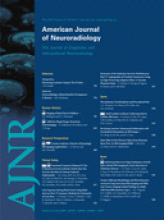Article Figures & Data
Tables
Dose Index Formula Notes CTDI 
T is the nominal width of a section and D(z) is the dose at point z parallel to the z-axis CTDI measured >100 mm 
N is the number of acquired sections per scan, T is the nominal width of each acquired section, and D(z) is the dose at point z parallel to the z-axis Weighted CTDI 
CTDI100,center is the CTDI100 measured at the center of the standard CTDI phantom and CTDI100,periphery is the CTDI100 measured at the periphery of the phantom CTDIvol 
Pitch is table travel distance per rotation divided by nominal beam width CT Scanner (number of detector rows) Axial Scan Helical Scan Collimation (mm) Rotation Time (sec) mAs Collimation (mm) Rotation Time (sec) mAseff Helical Pitch Aquilion 64 (64), Toshiba Medical Systems, Tokyo, Japan 8 × 0.5 1 350 64 × 0.5 1 300 0.641 LightSpeed VCT (64), GE Healthcare, Milwaukee, Wisconsin 16 × 0.625 2 420 32 × 0.625 1 433 0.531 LightSpeed Ultra 16 (16), GE Healthcare 8 × 1.25 2 400 16 × 0.625 0.7 261 0.938 LightSpeed Ultra 8 (8), GE Healthcare 4 × 3.75 2 360 8 × 1.25 0.8 256 0.625 LightSpeed QX/i (4), GE Healthcare 4 × 2.5 2 400 4 × 2.5 0.7 326 0.75 Brilliance CT 64 (64), Philips Medical Systems, Best, the Netherlands 16 × 0.625 1.5 450 64 × 0.625 0.5 450 0.423 MX 8000 IDT (16), Philips Medical Systems, 16 × 1.5 1.5 400 16 × 0.75 0.75 400 0.5 Somatom Sensation Cardiac 64 (64), Siemens, Malvern, Pennsylvania 12 × 1.2 2 380 20 × 0.6 1 422 0.9 - Table 3:
CTDIvols and the lens doses for both axial and helical scans with each CT scanner during whole-brain CT including the orbit
CT Scanner (Number of Detector Rows) Axial Scan Helical Scan Lens Dose (mGy) CTDIvol (mGy) Lens Dose/CTDIvol Lens Dose (mGy) CTDIvol (mGy) Lens Dose/CTDIvol Aquilion 64 (64) 103.5 ± 7.2 113.3 ± 0.0 91.4 ± 6.4% 82.3 ± 7.3 96.0 ± 0.0 85.7 ± 7.6% LightSpeed VCT (64) 81.5 ± 9.8 101.1 ± 0.0 80.6 ± 9.7% 75.4 ± 0.9 74.3 ± 0.0 101.5 ± 1.2% LightSpeed Ultra 16 (16) 71.5 ± 2.4 85.8 ± 0.0 83.3 ± 2.8% 48.7 ± 0.9 59.6 ± 0.0 81.7 ± 1.5% LightSpeed Ultra 8 (8) 56.6 ± 0.9 66.5 ± 0.0 85.1 ± 1.3% 45.6 ± 0.7 50.9 ± 0.0 89.7 ± 1.4% LightSpeed QX/i (4) 70.2 ± 1.5 75.1 ± 0.0 93.5 ± 2.0% 66.7 ± 1.4 65.1 ± 0.0 102.5 ± 2.1% Brilliance CT 64 (64) 61.7 ± 4.9 72.4 ± 0.0 85.3 ± 6.8% 52.6 ± 0.8 50.9 ± 0.0 103.4 ± 1.6% MX 8000 IDT (16) 48.1 ± 3.2 51.8 ± 0.0 92.8 ± 6.2% 57.4 ± 1.4 57.0 ± 0.0 100.7 ± 2.4% Somatom Sensation Cardiac (64) 48.4 ± 1.7 58.9 ± 0.0 82.2 ± 2.8% 42.6 ± 0.9 51.5 ± 0.0 82.8 ± 1.7% CT Scanner (Number of Detector Rows) Scans from Orbitomeatal Line Scans from Superior Orbital Rim DOM (mGy) DOM/DIOR (%) DOM/CTDIvol (%) DSOR (mGy) DSOR/DIOR (%) DSOR/CTDIvol (%) Aquilion 64 (64) 89.9 ± 4.4 86.9 79.3 12.2 ± 0.6 11.8 10.8 LightSpeed VCT (64) 64.5 ± 1.5 79.1 60.3 11.0 ± 0.7 13.5 10.4 LightSpeed Ultra 16 (16) 57.9 ± 0.9 81.0 67.5 9.2 ± 0.2 12.9 10.7 LightSpeed Ultra 8 (8) 52.2 ± 1.6 92.2 78.5 7.7 ± 0.3 13.6 11.6 LightSpeed QX/i (4) 64.6 ± 0.6 92.0 86.0 10.3 ± 0.2 14.7 13.7 Brilliance CT 64 (64) 56.9 ± 2.1 92.2 78.6 12.9 ± 0.6 20.9 17.8 MX 8000 IDT (16) 44.6 ± 3.7 92.7 86.1 7.1 ± 0.3 14.8 13.7 Somatom Sensation Cardiac 64 (64) 42.2 ± 0.4 87.2 71.8 8.9 ± 0.8 8.4 15.2
















